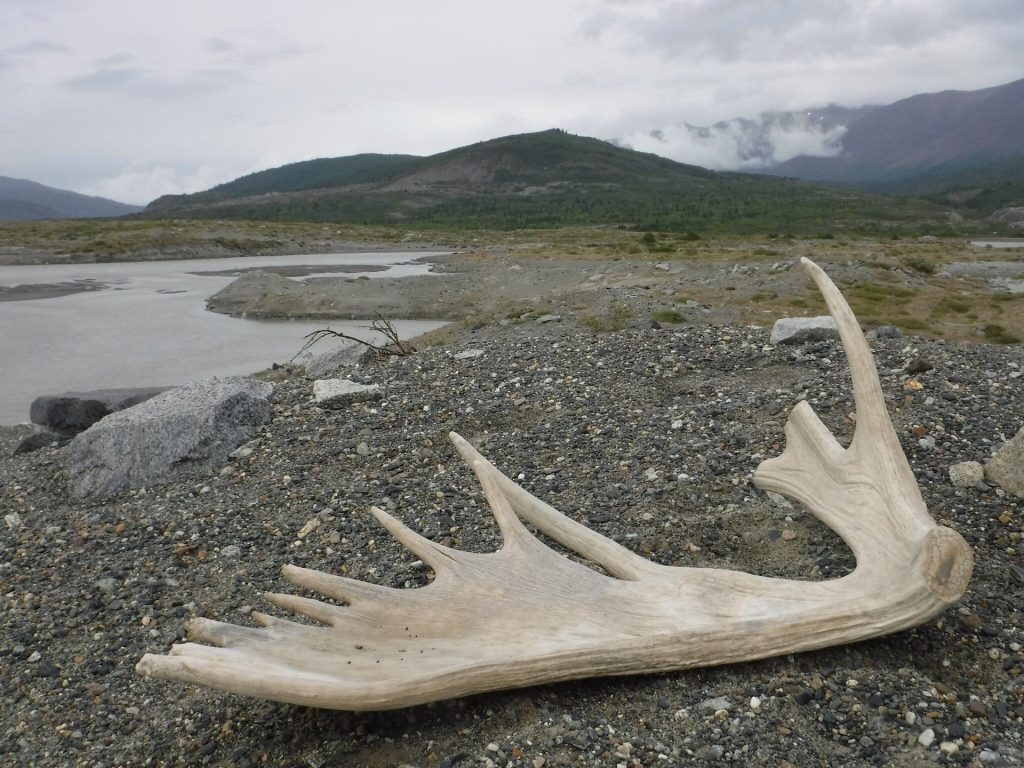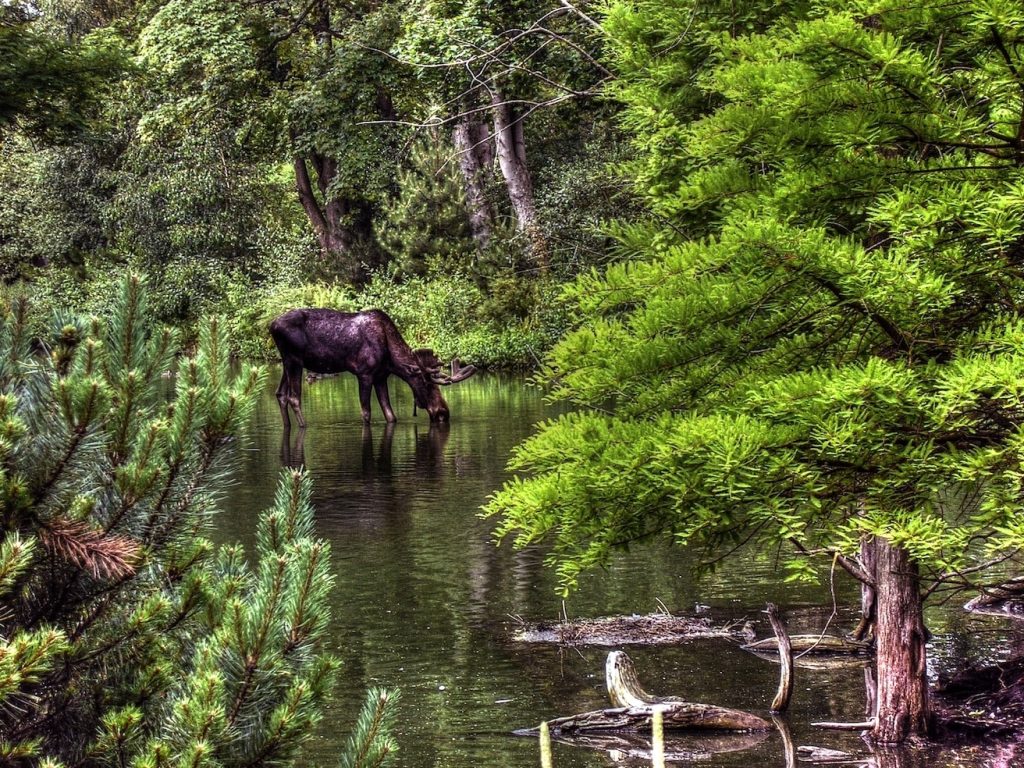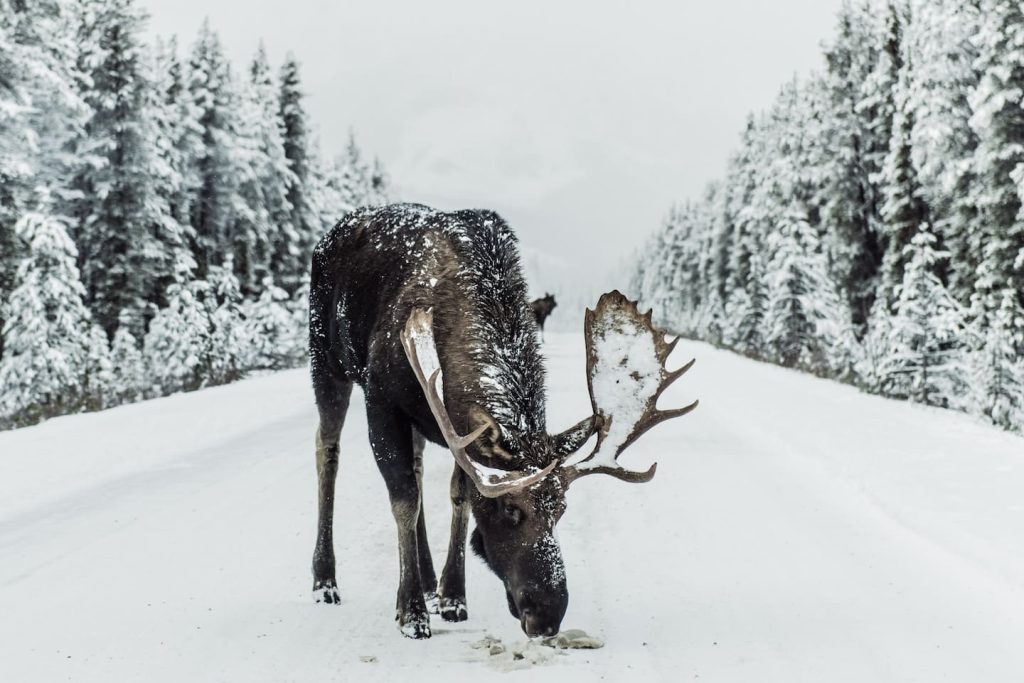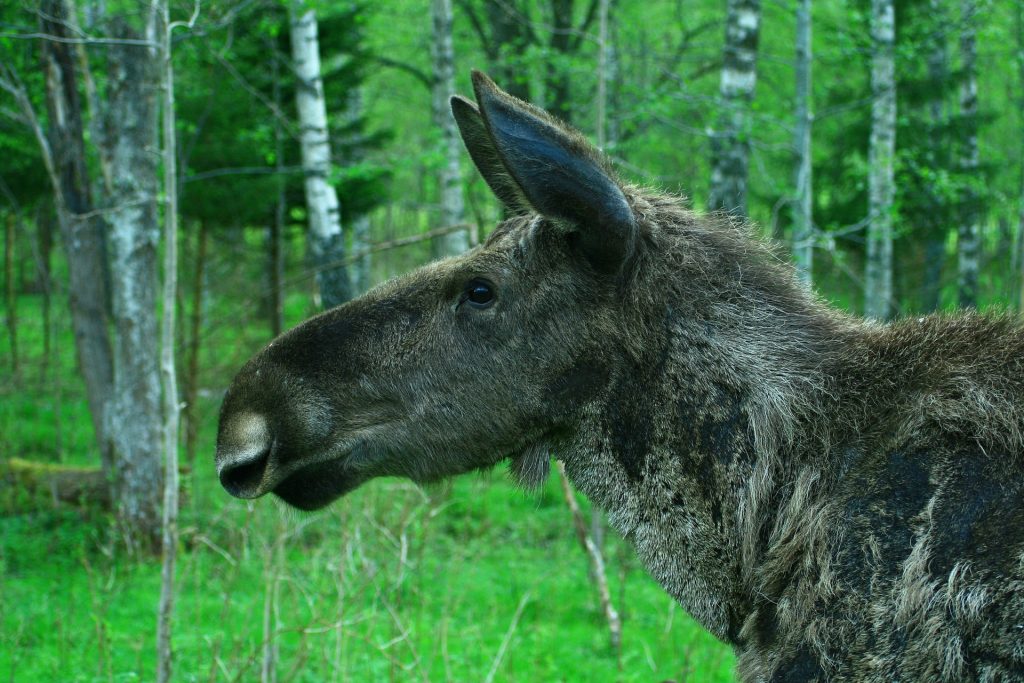If you were thinking to yourself, “Hey, isn’t the moose the largest mammal in North America?” then pat yourself on the back because you are correct! There are four subspecies of moose in North America. The moose in Alaska are the biggest, but on average a bull moose is about six feet tall and weighs 1,000 pounds.
According to recent figures, there are around 300,000 moose in the United States with more than half of them in Alaska. Despite their size, they are difficult to count since they a) do not run in herds, b) can get up to 35 miles-per-hour when they do run, and c) blend in really well with their environs.
Really, really well. I have a friend who canoed right into one and another who got hit by one while she was skiing. They’re huge with spindly legs and have maneuverability issues (by ‘they’ I mean moose, not my friends).

Moose antlers are palmated; that is, shaped like a hand. But their antlers have such a pronounced scoop they are often called paddles. Paddles sounds cute, but a moose antler rack can easily weigh 40 pounds and the points can be very sharp once the velvet is rubbed off in October.
Moose can’t sweat, so they are very fond of colder climates. Because of this, you can pretty much draw a line right through the middle of Colorado across America and if you look in any state above the line you can find a moose. I could pinpoint it down to where in each available state, but for your chances to view them, let’s focus on some select locations where the opportunity to see moose is higher.

Your best bet to see a moose is always near water. They love to swim and water keeps them cool. Plus, pondweed (one of their favorite foods) grows in water. Moose will dive into the water and completely submerge themselves to get their desired plant. You can often see them being very stubborn, refusing to move, with just their huge heads above water. Perhaps their gangly look and streak of stubbornness is why moose are nicknamed Swamp Donkeys.

Alaska – moose population: 170,000
Alaska, as you may well remember from geography class, is humongous. However, you can find moose pretty easily. Some of the best places are around Anchorage, particularly Kincaid Park. Further inland, look for places where there have been recent forest fires. Moose love to eat new shoots.
You can also head to a local Alaskan suburb and have a pretty good chance of seeing a couple as well.
Maine – 70,000
Maine has the highest moose density in the contiguous United States and the moose is Maine’s state animal. Two great regions to spot a moose are Baxter State Park and the aptly named Moosehead Lake.
Idaho – 10,000
Most of the moose in Idaho will be in the north in the heavily forested areas of the panhandle. However, you may have a better chance of spotting one along the Snake River Plain where you, and moose, will find broader stretches of water.
Montana – 5,000
The vast majority of Montana’s moose population is in the western part of the state, so head to the park, as in the park— Glacier National Park. Located in the northwest quadrant, a good place to see a moose in Glacier National Park is around the Swiftcurrent Nature Trail.
Wyoming – 4,000
Stick to the northwest quadrant of Wyoming, aka Grand Teton National Park and Yellowstone. Places like Oxbow Bend and Blacktail Ponds can be good places to take a look.
Minnesota – 4,000
Head north. The Gunflint Trail out of Grand Marais gives you a good opportunity to see a moose, especially the Moose Viewing Trail (silly as that sounds). As a bonus, the howling wolves at night are amazing.
New Hampshire – 4,000
Your best chance to see a moose is to head right up into New Hampshire’s northeast corner where it runs into Maine and Canada and drive State Road 3. Another good location is in the middle of the state around Pemi Valley.
Washington – 3,000
How to spot a moose in Washington? Wait for it to cross from Idaho. Seriously though, check the Selkirk Mountains in the Pend Oreille region.
Utah – 3,000
You will stand a good chance of seeing moose in northern Utah. Look in the valleys of the Wasatch Mountain range, around the not-so-aptly-named Bear Lake (a lake divided by Utah and Idaho) and ask people in Park City where to go. They’re helpful folk.

Vermont – 2,000
They are in the kingdom! Specifically, the area known as the Northeast Kingdom where Maine, New Hampshire and Vermont all squish together. Check out the bogs and wetlands at West Mountain.
Colorado – 1,000
Most of them are in the northern part of the state. The best places to look for moose are the Laramie River Valley (close to Red Feather Lakes area) and Walden just north of the Arapaho National Wildlife Refuge…or on a ski slope in Steamboat Springs.








